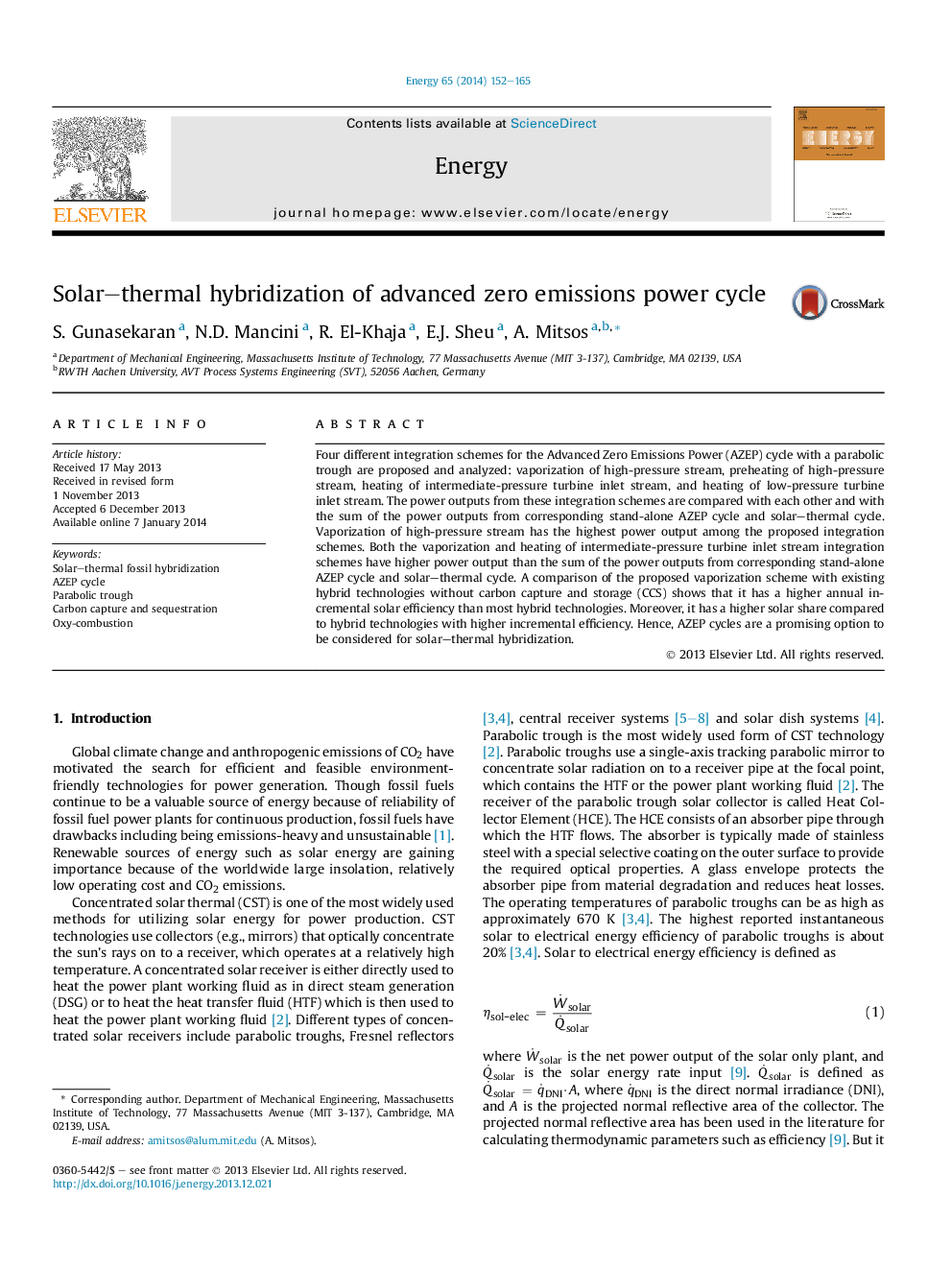| Article ID | Journal | Published Year | Pages | File Type |
|---|---|---|---|---|
| 1732673 | Energy | 2014 | 14 Pages |
•Solar–thermal integration of AZEP100 cycle is proposed.•Vaporization of high pressure water integration scheme seems most promising integration scheme.•Solar–thermal hybridization of AZEP has a very good compromise between solar share and efficiency.•Solar–thermal hybridization of AZEP results in high incremental solar efficiency.•AZEP cycles are a promising option to be considered for solar–thermal hybridization.
Four different integration schemes for the Advanced Zero Emissions Power (AZEP) cycle with a parabolic trough are proposed and analyzed: vaporization of high-pressure stream, preheating of high-pressure stream, heating of intermediate-pressure turbine inlet stream, and heating of low-pressure turbine inlet stream. The power outputs from these integration schemes are compared with each other and with the sum of the power outputs from corresponding stand-alone AZEP cycle and solar–thermal cycle. Vaporization of high-pressure stream has the highest power output among the proposed integration schemes. Both the vaporization and heating of intermediate-pressure turbine inlet stream integration schemes have higher power output than the sum of the power outputs from corresponding stand-alone AZEP cycle and solar–thermal cycle. A comparison of the proposed vaporization scheme with existing hybrid technologies without carbon capture and storage (CCS) shows that it has a higher annual incremental solar efficiency than most hybrid technologies. Moreover, it has a higher solar share compared to hybrid technologies with higher incremental efficiency. Hence, AZEP cycles are a promising option to be considered for solar–thermal hybridization.
